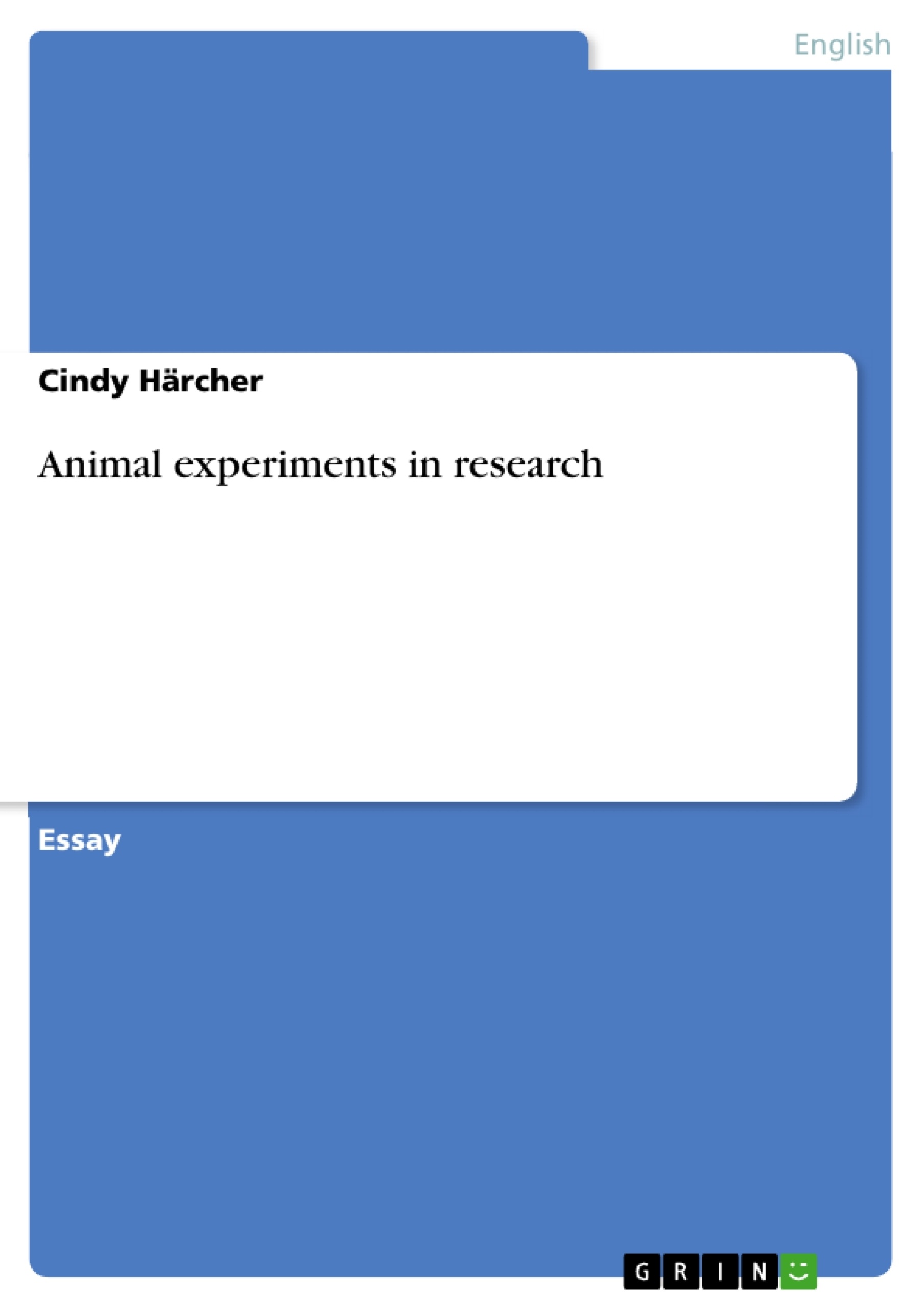The British Union for the Abolition of Vivisection (BUAV) estimates 100 million vertebrates are used for experiments around the world every year . This paper deals with the necessity of animal experiments in research and possible alternatives which could replace them completely. With focus on the history of animal experiments, as for instance the birth of Dolly the sheep which was the first cloned mammal from an adult cell, the areas in which the animal experiments are used, the transferability of the results from these tests to human and the question according to alternatives to animal testing, the paper shows if it is possible to dispense with animal experiments. Information has been collected from technical literature, reports and internet articles. It is argued that animal experiments are necessary and current research has so far not been able to find alternatives which could replace them. However alternatives are described which reduce the number of animal experiments and avoid that animals suffer unnecessarily.
Inhaltsverzeichnis (Table of Contents)
- Introduction
- What is an animal experiment and which animals are used
- History of animal experiments
- Areas employing experimental animals
- The importance of animal experiments
- Transferability of the results from animal experiments to human
- Alternatives to animal experiments
- Is it possible to dispense with animal experiments?
- The three R's
- Conclusion
Zielsetzung und Themenschwerpunkte (Objectives and Key Themes)
This paper explores the ethical considerations surrounding animal experimentation and argues that, despite the controversy, such experiments remain essential for scientific progress and the development of life-saving treatments. It aims to demonstrate the necessity of animal testing while acknowledging the importance of finding alternatives.
- Ethical considerations surrounding animal experimentation
- The history and current use of animal experiments
- The importance of animal experiments in medical and scientific research
- The transferability of results from animal experiments to human subjects
- Exploring alternatives to animal testing
Zusammenfassung der Kapitel (Chapter Summaries)
- Introduction: This section provides a concise overview of the debate surrounding animal experimentation, highlighting the ethical concerns and the ongoing need for research in this area.
- What is an animal experiment and which animals are used: This chapter defines animal experimentation and outlines the legal framework regulating its use in Germany. It also describes the types of animals commonly used in research, including rodents, cats, and farm animals.
- History of animal experiments: This chapter traces the historical development of animal experimentation, citing key individuals and breakthroughs. It highlights the significance of animal research in advancing medical understanding and treatment.
- Areas employing experimental animals: This chapter examines the various fields that rely on animal experimentation, emphasizing the role of such research in advancing medical knowledge, developing new surgical techniques, and improving the quality of life for humans.
- The importance of animal experiments: This chapter argues that animal research has been crucial in developing life-saving medical treatments and procedures, citing examples such as vaccines, insulin therapies, and chemotherapy.
Schlüsselwörter (Keywords)
Animal experimentation, animal welfare, ethics, medical research, scientific progress, transferability, alternatives, regulation, three Rs, vivisection.
- Arbeit zitieren
- Cindy Härcher (Autor:in), 2010, Animal experiments in research, München, GRIN Verlag, https://www.hausarbeiten.de/document/146570


